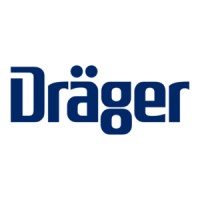89
Technical Data
Power consumption (without analogue signal trans-
mission)
typical 50 mW
Cable inlet M20 x 1.5; cable diameter 6 mm (0.24") to 12 mm (0.47")
Wire cross-section 0.5 mm
2
(AWG 20) to 2.5 mm
2
(AWG 13)
Weight approx. 0.9 kg / 2.0 lb, without pump and relay module.
Ambient conditions Specifications for the sensor: see sensor data sheet
for operation –40 to 65
o
C (–40 to 160
o
F)
1)
700 to 1300 hPa (20.7 to 38.4 inch Hg)
0 to 100 % relative humidity, non condensing
1)
The legibility of the display is restricted at temperatures below –20
o
C (–5
o
F). Operation of the transmitters becomes more difficult at subzero
temperatures due to the increasing slowness of the display.
2)
Actual supply voltage at the transmitter.
during storage –40 to 70
o
C (–40 to 150
o
F)
700 to 1300 hPa (20.7 to 38.4 inch Hg)
0 to 100 % relative humidity, non condensing
Relay module
Caution:
The relay module is not covered by the explosion protection approvals.
Use is not permitted in explosion-hazard areas! Explosion hazard!
Supply voltage (DC) 12 V to 30 V at the transmitter
Relay outputs
— logical channels A1, A2, fault
— principle normally energised (for fail-safe operation)
— contacts 1-pole changeover (SPDT)
— contact rating 5 A at 30 V DC; 5 A at 250 V AC
Ambient conditions
for operation –40 to 65
o
C (–40 to 160
o
F)
700 to 1300 hPa (20.7 to 38.4 inch Hg)
0 to 100 % relative humidity, non condensing
during storage –40 to 70
o
C (–40 to 150
o
F)
700 to 1300 hPa (20.7 to 38.4 inch Hg)
0 to 100 % relative humidity, non condensing
CE markings — Electromagnetic compatibility (Directive 89/336/EEC)
— Low-voltage equipment (Directive 72/23/EEC), when used with transmitter)

